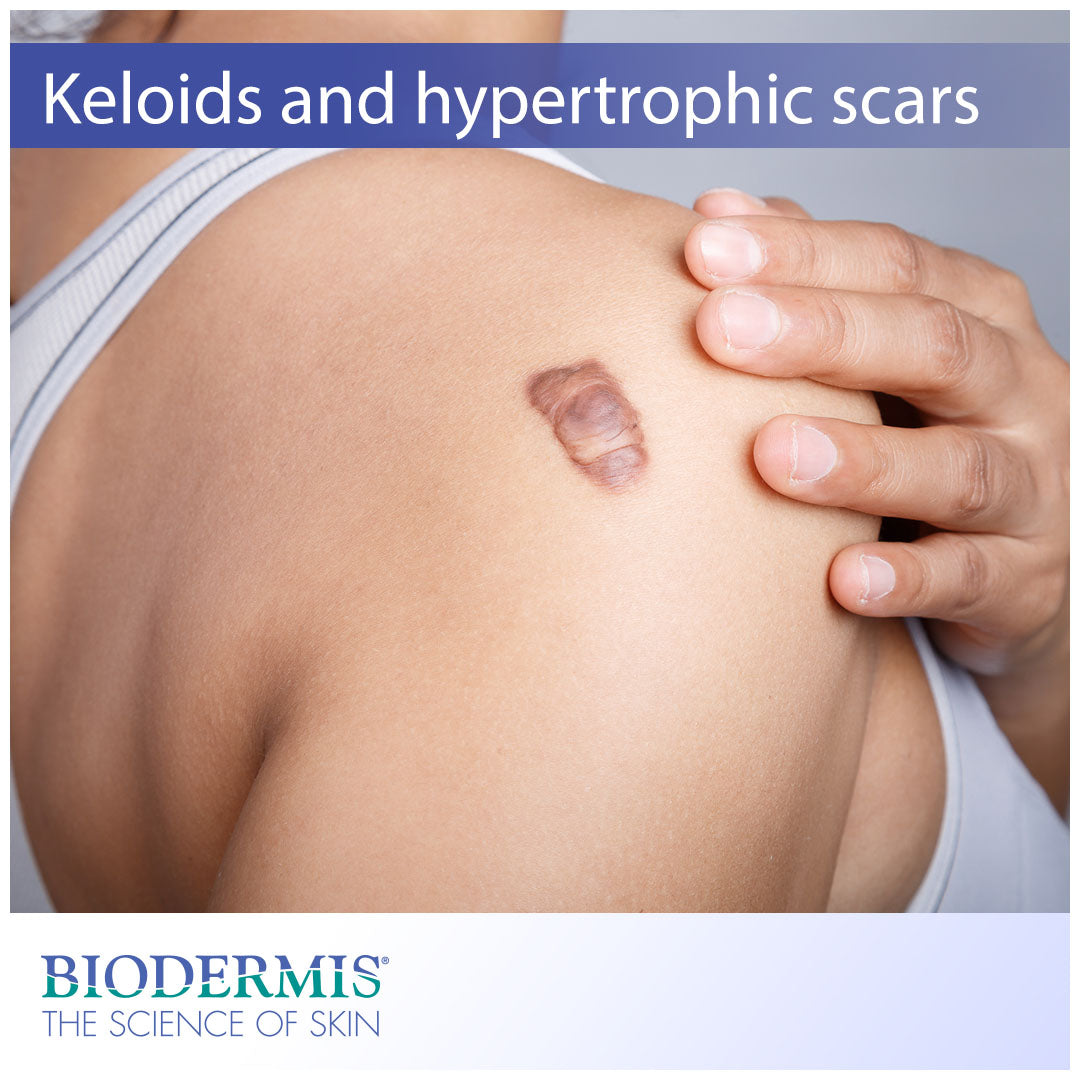Keloids and hypertrophic scars are two scar types that can develop at the trauma site following surgery or injury. Both scar types are marked by their raised, discolored appearance that can cause physical and emotional discomfort for the person affected. Not everyone who sustains a wound will develop a keloid or hypertrophic scar, but if you have a family history with these types of scars, you may be susceptible. However, if you are prone to excessive and abnormal scarring, you can rest easy knowing there are products that can help diminish even the most unsightly scar.
Continue reading to learn more about keloids and hypertrophic scars and what you can do to safely and effectively prevent them.
While keloids are mostly a cosmetic concern, they can become physically uncomfortable for some patients. Keloids tend to feel tighter than normal skin tissue and can cause itchiness and pain when located on a part of the body that undergoes friction from clothing or repetitive motion. Keloids often differ in color from the surrounding skin, ranging from pink to purple and brown. In severe cases, keloids may need to be surgically removed to improve the patient’s quality of life.
Continue reading to learn more about keloids and hypertrophic scars and what you can do to safely and effectively prevent them.
What are keloids?
When the skin undergoes trauma from surgery or injury, it responds by initiating a dynamic and complex wound-healing response. Certain stages in the wound healing process are characterized by the synthesis of new fibrous and connective materials to rebuild the damaged tissue. If the wound penetrated deep enough (at least as far as the dermis), then the formation of scar tissue will result. In the case of keloids, scar tissue grows uncontrollably and develops into smooth, lumpy growths at the wound site. Keloids are different from other scars in that the scar tissue grows past the initial boundaries of the wound, meaning they’re larger than the wound itself. Keloids seem to be linked to genetics as they mostly affect people with darker skin pigmentations.While keloids are mostly a cosmetic concern, they can become physically uncomfortable for some patients. Keloids tend to feel tighter than normal skin tissue and can cause itchiness and pain when located on a part of the body that undergoes friction from clothing or repetitive motion. Keloids often differ in color from the surrounding skin, ranging from pink to purple and brown. In severe cases, keloids may need to be surgically removed to improve the patient’s quality of life.
What are hypertrophic scars?
Hypertrophic scars are much more common than keloids and affect all populations equally. Similar to keloids, hypertrophic scars develop in response to an excess buildup of collagen and other structural materials that occurs as part of an abnormal wound healing process. Hypertrophic scars are raised and discolored like keloids but they don’t grow past the initial wound site. People may develop hypertrophic scars for a number of reasons including infection, inflammation, and improper wound care. Hypertrophic scars can be the result of anything from open heart surgery to piercings and acne scarring. Patients want to avoid these scar types because, like keloids, they can be cosmetically unappealing and itchy.
A clinically-proven scar management solution
When doctors and patients consider scar management, they want a solution that’s not only safe and effective, but one that is clinically proven to work. Medical-grade silicone for the reduction and prevention of abnormal scar types has been the recognized standard for topical scar therapy for over 30 years. With years of clinical evidence to support it, doctors and healthcare professionals can feel confident referring their patients for topical silicone for scar therapy.Topical silicone works through two mechanisms of action: dermal hydration and collagen regulation. When the skin attains a wound from an incision, puncture, or burn, specialized skin cells in the dermis react by rebuilding the damaged tissue. Damaged skin causes the body to lose excess moisture, triggering skin cells to synthesize massive amounts of collagen and other structural molecules. If left unchecked, structural proteins can continue to build up, leading to keloids and hypertrophic scars. Topical silicone acts as a protective barrier that prevents excess moisture loss at the wound site, allowing collagen synthesis to normalize. This helps to reduce the height and discoloration of abnormal scar types, helping them blend in with the surrounding tissue.
Biodermis is an innovative market leader with 30 years of expertise in the medical silicone industry. Visit Biodermis.com today to explore a complete range of scar management and post-operative care solutions.
PHYSICIANS AND MEDICAL PROFESSIONALS: REFER OR RESELL?
Biodermis offers custom tailored referral programs designed to simplify and reduce the cost of your patients' post-op care. Additionally, we offer professional pricing if you opt to retail our products. Give us a call at 800.322.3729, and we will be happy to provide additional details on these programs.



